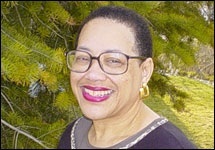 In the midst of varying proposals for housing reform, civil rights leaders are publicly calling for lawmakers to keep mortgage lending affordable and accessible. A recent letter jointly signed by the NAACP, National Urban League, National Council of LaRaza, National Fair Housing Alliance, the Haas Institute's John Powell, and the Center for Responsible Lending, reminded Capitol Hill lawmakers how low down payment mortgages enabled many low-wealth borrowers to become successful homeowners.
In the midst of varying proposals for housing reform, civil rights leaders are publicly calling for lawmakers to keep mortgage lending affordable and accessible. A recent letter jointly signed by the NAACP, National Urban League, National Council of LaRaza, National Fair Housing Alliance, the Haas Institute's John Powell, and the Center for Responsible Lending, reminded Capitol Hill lawmakers how low down payment mortgages enabled many low-wealth borrowers to become successful homeowners.
"For decades, low down payment loans have been used with great success to promote sustainable homeownership, particularly for low-to-moderate income families and people of color", wrote the leaders. "Furthermore, low down payment loans did not cause the current foreclosure crisis – irresponsible underwriting and toxic loan terms did."
Nikitra Bailey, executive vice-president with CRL added, "While families and communities struggle to recover from their tremendous lost wealth, no community should be left behind. All Americans deserve to be part of the nation's financial recovery. . . .Without that access, the nation's wealth gap will only grow wider."
Government-mandated down payments of 10 percent or five percent are currently under consideration in Washington. CRL's research shows that for the average family, it would take 22 years to amass a 10 percent down payment. But for African-American families, 34 years of saving would be needed, and 21 years for the typical Latino family.
Even if government would mandate a five percent down payment, the typical African-American family would wait 28 years to become homeowners and 17 years for the average Latino family. Overall, America's average family would need to save 14 years for a home.
These savings fail to take into account the closing costs, which typically are an added three percent of the cost of the mortgage. Further, there seems to be no wisdom in requiring these homeownership delays when so many families have sustained their low down payment mortgages.
For example, Federal Housing Administration mortgages typically require a minimum of 3.5 percent of the purchase price and can include most of the closing costs and fees in the mortgage payment. According to FHA, 78 percent of 784,000 mortgages made in 2012 were to first-time homebuyers. Similarly in 2012, 86 percent of 88,000 Veterans Administration (VA) mortgage loans went to first-time homebuyers and were acquired with no down payment costs.
A recent joint study by CRL and the Center for Community Capital at the University of North Carolina found that among borrowers who took out a mortgage from 2004-2008 and were current through February of 2011, 60 percent of successful black mortgage borrowers would have been excluded if a 10 percent down payment had been required. A five percent down payment would have excluded 33 percent of successful black borrowers.
These data points become even more disturbing when the nation's growing diversity is considered. By 2010, an estimated 70 percent of new households are expected to be comprised of people of color.
The irony of these proposals is that government broadened access to homeownership through its post -World War II policies. As homeownership grew, so did family wealth.
"What began as a mortgage became the bedrock for family wealth", observed Bailey. "That is the American Dream we must fight to preserve in 2013. . . . We must wage strategic and focused efforts to force policymakers to enact reforms that benefit low wealth families, not just the wealthy."
- Home
- News
- Opinion
- Entertainment
- Classified
- About Us
 MLK Breakfast
MLK Breakfast- Community
- Foundation
- Obituaries
- Donate
05-12-2024 12:55 pm • PDX and SEA Weather






















































































































































































































































































































